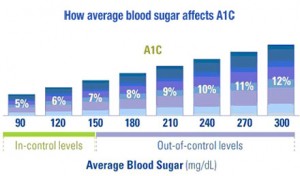Hemoglobin A1C Test for Diabetics
When it comes to managing diabetes effectively the key is proper glucose management, and the best way to check the efficiency of the patient’s glucose management regimen is with the hemoglobin a1c test. Most diabetics are familiar with checking their blood sugar by glucometer, sometimes many times daily. So How Does the Hemoglobin A1C Test Work? The glucometer measures the level of glucose in a drop of blood which is placed on a test strip and read by the machine. The hemoglobin a1c is also a blood test which measures the average glucose levels over…



